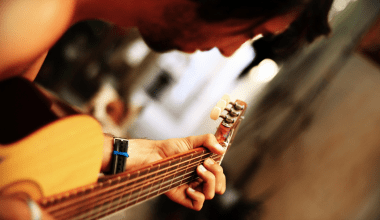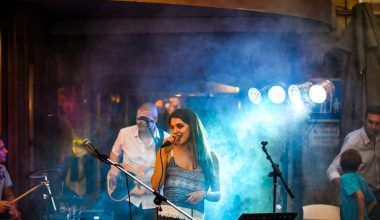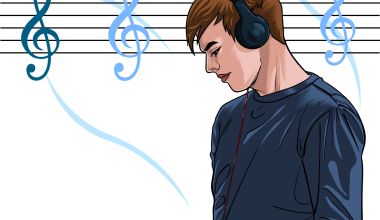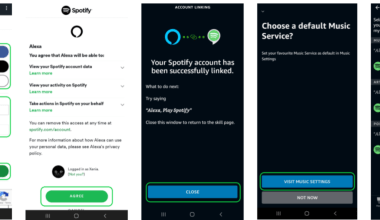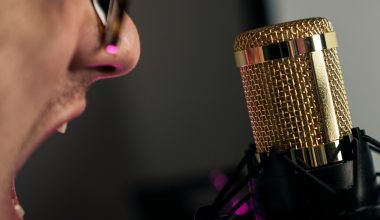Let’s start with the basics. Have you ever watched a movie or an ad where the music just made you feel something? Maybe it gave you chills, or maybe it made you smile. That’s music synchronization in action! In simple words, music synchronization is when music is paired with videos like movies, TV shows, ads, video games, or even social media clips.
For example:
- The intense background music during a thrilling car chase in a movie.
- A soft melody in an emotional TV commercial.
- The groovy beats in a video game that keep you engaged.
All these examples use music synchronization to make the content more powerful and memorable.
How Does Music Synchronization Work?
To use a song in a video, permission is needed. This is where music synchronization licenses come into play. There are two main types of licenses:
- Sync License: Permission to use the music with video.
- Master License: Permission to use the original recording of the song.
When a filmmaker, brand, or creator finds the right song, they negotiate with the music owner (artist, label, or publisher) and agree on terms like payment and usage rights. Once that’s done, the magic of music and visuals comes to life!
Why is Music Synchronization Important?
Music synchronization isn’t just about adding tunes to videos—it’s about creating emotions. Here’s why it matters:
- For Artists: It helps musicians earn money and get noticed. A sync deal can sometimes pay more than months of streaming royalties.
- For Brands: Music makes ads memorable. Think of iconic jingles you still hum today!
- For Filmmakers: It makes movies and shows unforgettable. Imagine a horror scene without the creepy music—it wouldn’t have the same effect.
Where Do We See Music Synchronization?
Music synchronization is everywhere! Here’s where you might have come across it:
1. Movies and TV Shows
Movies and TV shows rely heavily on music to set the mood. A romantic scene feels more magical with soft music, and a superhero’s entry feels grand with an epic score.
2. Ads and Commercials
Brands use catchy tunes or famous songs in ads to grab your attention. For example, you might associate a particular brand with a popular jingle because it sticks in your head.
3. Video Games
Music in video games isn’t just background noise—it enhances the experience. A fast-paced game with energetic music makes it more exciting.
Creators on Instagram, TikTok, and YouTube use sync music to make their videos more professional and appealing.
How Do Artists Benefit from Music Synchronization?
For artists, sync licensing can be life-changing. Here’s how:
- Earn Big Money: A single sync deal can earn an artist thousands of dollars.
- Reach More People: When your music is featured in a movie, ad, or game, millions of people might hear it.
- Build Your Brand: Sync deals can make your music more popular and give you recognition in the industry.
How Can You Get Your Music Synchronized?
If you’re an artist, here’s how you can start:
- Distribute Your Music Widely: Make sure your songs are on platforms like Spotify, Apple Music, and YouTube. Services like Deliver My Tune can help you get your music out there easily.
- Create Instrumental Versions: Sometimes, videos need music without lyrics so it doesn’t clash with the dialogue. Offer instrumental versions of your songs.
- Collaborate with Music Supervisors: These are the people who choose music for films, ads, and shows. Networking with them can open doors to opportunities.
- Work with Sync Licensing Companies: Agencies specialize in connecting artists with brands and filmmakers.
What Makes a Song Good for Synchronization?
Not every song gets picked for sync deals. Here’s what makes a song sync-friendly:
- Relatability: Songs that evoke universal emotions like happiness, sadness, or excitement.
- Flexibility: Tracks that fit various themes, like love, adventure, or nostalgia.
- High Quality: Professionally recorded and mastered tracks stand out.
Challenges in Music Synchronization
While it’s a rewarding opportunity, there are some hurdles:
- Cost: Licensing a popular song can be expensive, which is why indie artists are often chosen.
- Finding the Right Match: It’s tricky to pair the perfect song with visuals.
- Legal Complexities: The licensing process can be complicated and requires understanding copyrights.
Music Synchronization in the Digital Age
With the rise of platforms like Netflix, TikTok, and YouTube, the demand for sync music has skyrocketed. Even independent artists have more chances to get noticed because brands and creators now prefer unique tracks over expensive hits.
Tips for Artists to Nail Sync Deals
Here’s how you can increase your chances of landing a sync deal:
- Have a Variety of Tracks: Offer songs of different moods and genres.
- Tag Your Songs: Add metadata to your tracks so they’re easy to find (e.g., “happy”, “uplifting”).
- Be Active Online: Share your music on social media to attract potential clients.
Future of Music Synchronization
The future looks bright! AI tools are now helping creators find the perfect songs faster, and the growth of digital content means more sync opportunities for artists. From metaverse concerts to interactive ads, the possibilities are endless.
Real-Life Examples of Music Synchronization Success
- Advertisers Boosting Sales: Nike’s ads often use empowering music that makes you feel ready to conquer the world.
- Songs Going Viral: Some songs become hits after being featured in TV shows or commercials. Think of the power of TikTok trends!
- Indie Artists Finding Fame: Many unknown artists have risen to fame after their music was used in a popular show or movie.
Conclusion: Why You Should Care About Music Synchronization
Whether you’re an artist or just someone who loves music, music synchronization matters because it shows how powerful music can be. For artists, it’s a chance to make money and grow. For brands and creators, it’s a way to connect with audiences emotionally. And for viewers, it’s what makes their favorite content unforgettable.
FAQs About Music Synchronization
1. Can anyone get their music synchronized?
Yes! Even indie artists can get sync deals. All you need is good music and the right connections.
2. How much can artists earn from sync deals?
Earnings vary but can range from hundreds to thousands of dollars depending on the project.
3. What’s the difference between sync and master licenses?
A sync license allows the use of the composition, while a master license allows the use of the actual recording.
Related Articles:
For further reading, explore these related articles:
- The Ultimate Guide to Music Plugins: Simple and Easy for Everyone
- How to Find Music Online: The Easiest Guide for Everyone
For additional resources on music marketing and distribution, visit Deliver My Tune.

